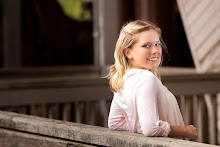Bernardo Cesare’s photo (above) displays granulite rock under a
microscope. The picture resembles a piece of stained glass window through sunlight,
but it’s just a thin slice of rock 0.03 mm in thickness and 5 mm in size. The
rock’s beautiful "interference colors" derive from the interaction of
polarized light with the crystalline matter.
Cesare is one of 32 contestants for the People’s Choice Award competition in the SPIE International Year of Light Photo Contest. Judges have already chosen three winners, but now it's your turn to choose.
SPIE is providing a prize of US $500 to the People's Choice winner. Online voting continues through 15 August.
This blog post features entries illustrating science and technology, including Cesare's, above, and four others, below. Future posts will showcase other entries -- follow the blog to catch them all.
Of his work, Cesare says on the National History Museum of London website,“My aim is to reveal the beauty of a world that is normally
accessible only to geologists and through images to tell the fascinating story
of our planet.”
Cesare is a professor of Petrology at the University of
Padova. As a geologist, he uses photography in his scientific work. His
project, micRockScopica, is a collection of photomicrographs and
microphotographs which have been displayed in mineralogical and scientific
photo galleries in Europe and the United States.
While studying minerals and rocks in Kerala, India, Cesare
realized the potential beauty of this piece of granulite rock. After finding a
thin transparent slice of the granulite he transmitted polarized light through
the slice. The light rays displayed the natural interference colors shown in
his photograph.
To brighten the original grey colors, he placed a red tint
plate in front of the polarized light. The greys turned into blues and purples.
For more information about Cesare, see:
Other People’s Choice finalists who demonstrated
light in science and technology in their photography are:
 |
| "The Constant," by Jasper da Seymour, Mystery Creek Cave, Tasmania, Australia, 15 July 2014. Inspired by the art of painting with light, Seymour uses fiber optic lighting in his photography. See Seymour's portfolio. |
 |
| "Interference in Soapy Water Film," by Andrew Davidhazy, Rochester, New York, USA, 2011. Interference of light causes colors to appear in thin films which otherwise appear transparent and colorless. For more high-speed, schlieren photographs see Davidhazy's portfolio. |
 |
| "Jewels on the Window," by Daniela Rapavá, residence, Rimavská Sobota, Slovakia, 12 January 2013. "The nature of light: what are photons?" For centuries we have used the word "interference" to describe the dark-bright bands recorded when we superpose two coherent light beams at a small angle on a detector. |
 |
| "Phaser Laser," by Cory Stinson, San Diego State University, California, USA, August 2010. From healing the human eye to removing layers of pollution from century old marble statues, laser technology is helping researchers develop new ways to improve people's lives. |



Comments
Post a Comment